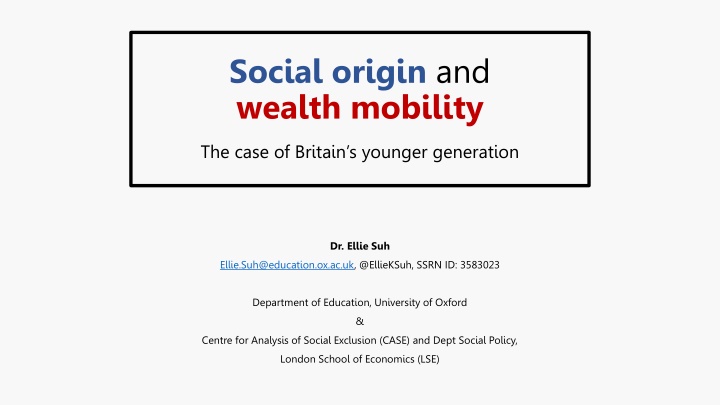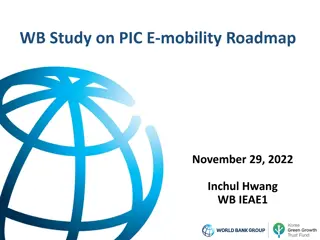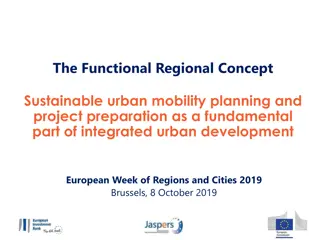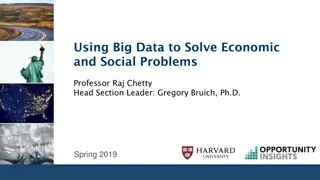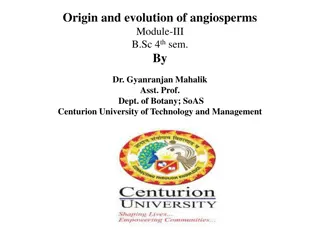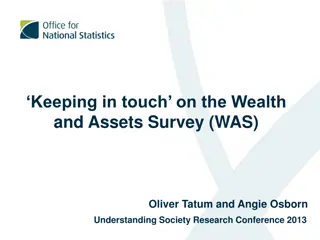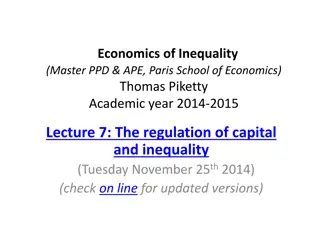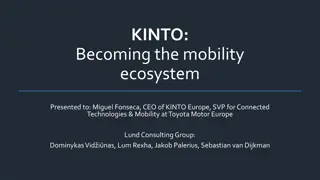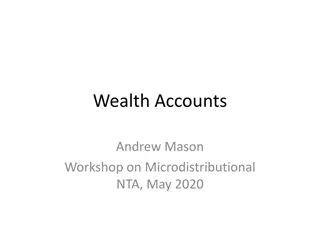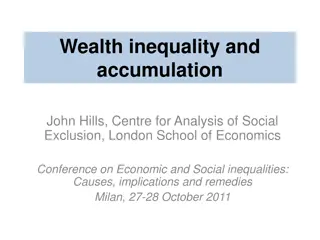Social Origin and Wealth Mobility: A Study on Britain's Younger Generation
Wealth and assets play a crucial role in shaping the social mobility of Britain's younger generation. Dr. Ellie Suh's research sheds light on how wealth accumulation contributes to inter- and intra-generational inequalities, emphasizing the importance of asset-based welfare policies. The study utilizes data and analytical strategies to understand how individuals engage with the system through ownership, risk perception, preferences, and access value in accumulating wealth.
Download Presentation

Please find below an Image/Link to download the presentation.
The content on the website is provided AS IS for your information and personal use only. It may not be sold, licensed, or shared on other websites without obtaining consent from the author.If you encounter any issues during the download, it is possible that the publisher has removed the file from their server.
You are allowed to download the files provided on this website for personal or commercial use, subject to the condition that they are used lawfully. All files are the property of their respective owners.
The content on the website is provided AS IS for your information and personal use only. It may not be sold, licensed, or shared on other websites without obtaining consent from the author.
E N D
Presentation Transcript
Social origin and wealth mobility The case of Britain s younger generation Dr. Ellie Suh Ellie.Suh@education.ox.ac.uk, @EllieKSuh, SSRN ID: 3583023 Department of Education, University of Oxford & Centre for Analysis of Social Exclusion (CASE) and Dept Social Policy, London School of Economics (LSE)
Introduction Wealth has become an important policy agenda Asset-based welfare Income and wealth Substantial housing and pension wealth Inter- and intra-generation inequality The younger half of working age population Wealth is likely to become more important Current economic environment not too favourable Increasing intergenerational link in wealth outcomes
Accumulation as a process Wealth: cumulative in nature Important to look at early/mid stages (aged 25 49) How does the younger generation accumulate wealth? Systematic (dis)advantages? Why important: Different wealth outcomes Central to the principles of asset-based welfare
Data & analytical strategy Wealth and Assets Survey (WAS), 2010/12 2014/16 (w3-w5) Longitudinal sub-sample, aged 25-49 (n=2,456) Methodological details Individualised Balance Sheet Approach* Saver types: Factor Mixture Modelling (FMM) Wealth mobility by parental home-ownership: Multi-group Latent Transition Analysis (LTA)
Wealth as data Four aspects to consider We can learn about how individuals engage with the system through: Owned or owed? (assets & Financial Housing Pension debt) Owner- ship Type Risk perception Preferences Access Value Patterns of engagement Ease of access Liquidity Amount ( )
Individual Balance Sheet Approach Wealth Type DATA - 9 variables Amount Cash savings Reported Financial Asset Investments Estimated Property Asset Housing (main residence) Value if sold today DB Pension DC Pension DB Estimated DC - Reported Assets Pension Asset Private pension Reported Consumption debt Reported Debt Financial Debt Personal loans Reported Property Debt Mortgages (main residence) Reported
Results: 4 saver types Traditional savers High Med Low (Total wealth) Investor savers DC DB Cash Investmt Housing DC DB % Undersavers Property saver-dissavers DB DC Personal Pension Pension Loan % High Medium Low (specific wealth type)
Wealth mobility Wealth mobility across three time points o Covariates predict the initial saver type membership (St1) o Wealth mobility: transition probabilities from t1 to t3 o Social origin: do transition probabilities differ by parental home-ownership? St1 St2 St3 X
Results: Initial saver type & wealth mobility
The effects* of parental wealth Man 35-year-old Married Income 36,000 pa Univ degree Parental HO Inheritance (> 15k) *: Not a causal effect!
Stages of wealth accumulation Market-oriented risk-taking Wealth building Life-cycle risk planning Wealth organising Wealth forming Everyday-risk mitigation
Pensions Commission; AE and its effect W5 W4 W3 From 12 o clock, clock-wise Automatic enrolment was introduced in October 2012 (during W4) following up on the Pensions Commission s recommendation. CSX5 1.2 CSX5: Savings (incl. ISA) 1.0 CHL5 CI5 CI5: Financial investments 0.8 0.6 CPR5: Property (Main res) 0.4 CDB5: DB pension 0.2 The changes in loadings between w3 and w5 points to AE coming into effect. CL5 CPR5 0.0 CDC5: DC Pension -0.2 CPV5: Private pension CD5: Consumption debt More people are now saving through a workplace pension, which is important for the younger generation. CL5: Personal debt CD5 CDB5 CHL5: Loan to Equity ratio CPV5 CDC5
Thank you With my immense gratitude to John Hills
Individualised Balance Sheet Approach Wealth Type Categories Amount Cash savings Reported Financial Asset Investments Estimated Assets Property Asset Housing (main residence) Value if sold today DB Pension DC Pension DB Estimated DC - Reported Pension Asset Private pension Reported Consumption debt Reported Debt Financial Debt Personal loans Reported Property Debt Mortgages (main residence) Reported
Establishing saver types using Factor Mixture Modelling (FMM) c_var1 - c_var9 b_var1 - b_var9 c f Continuous part (Amounts) Binary part (Ownership)
